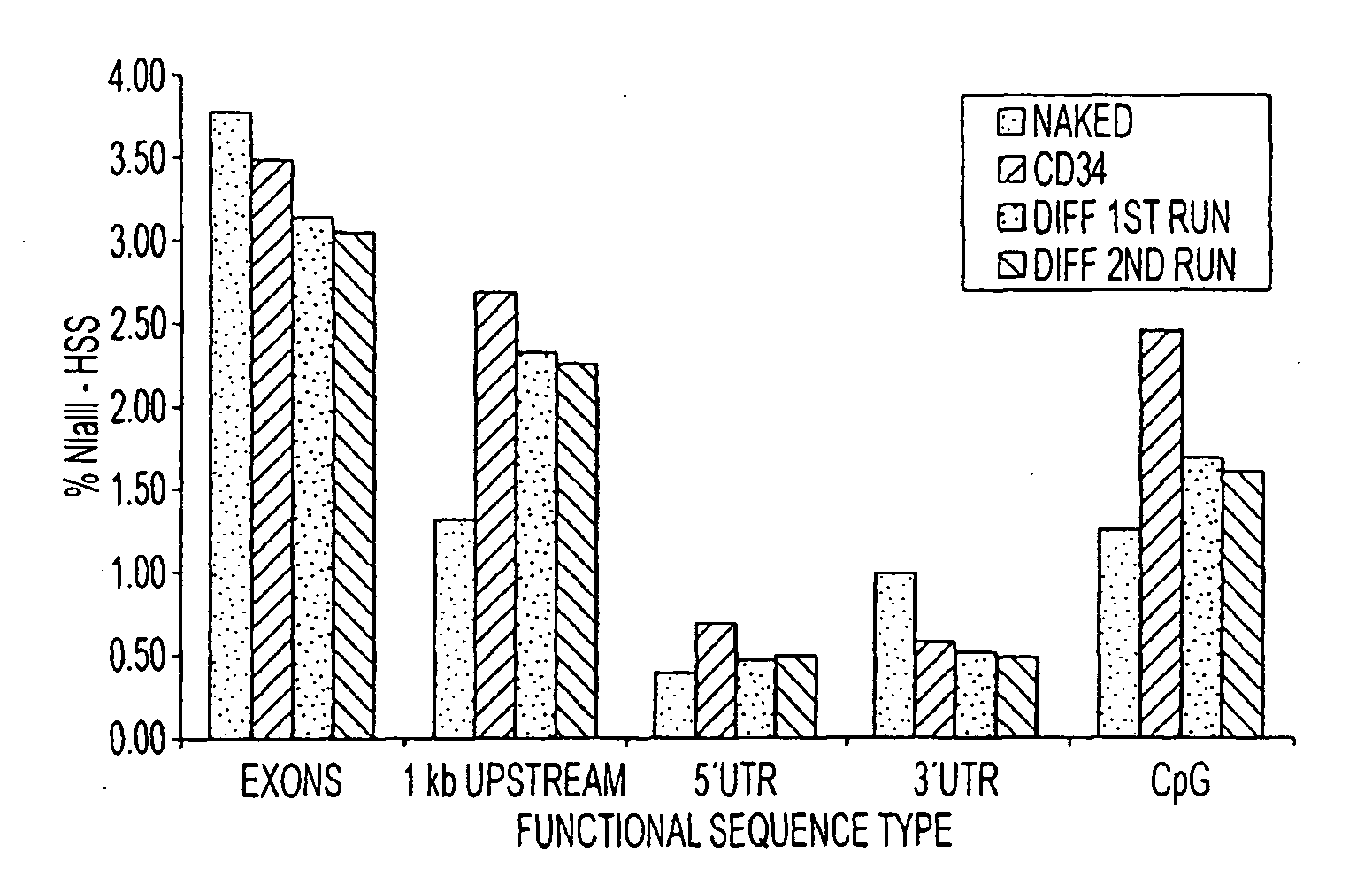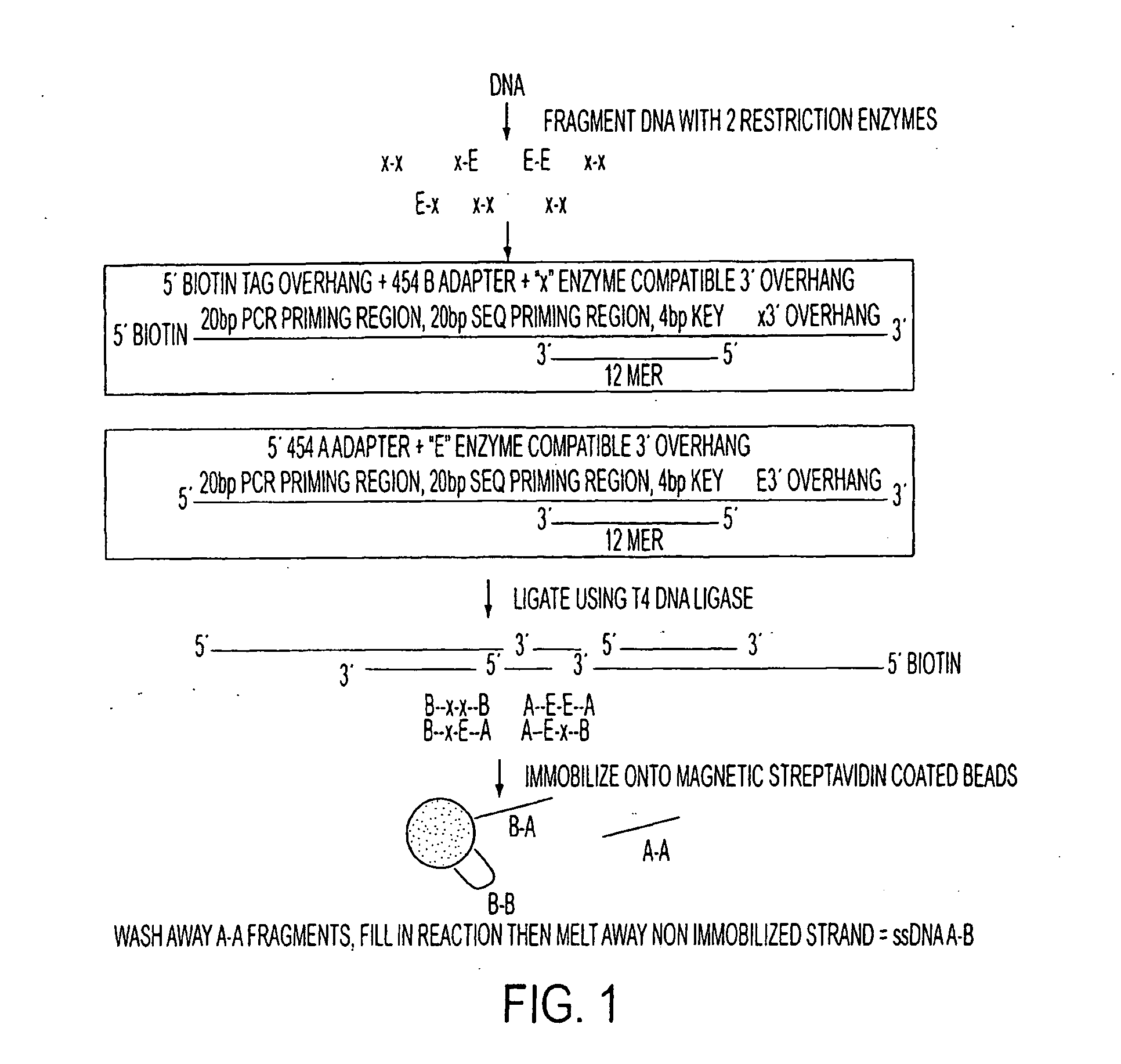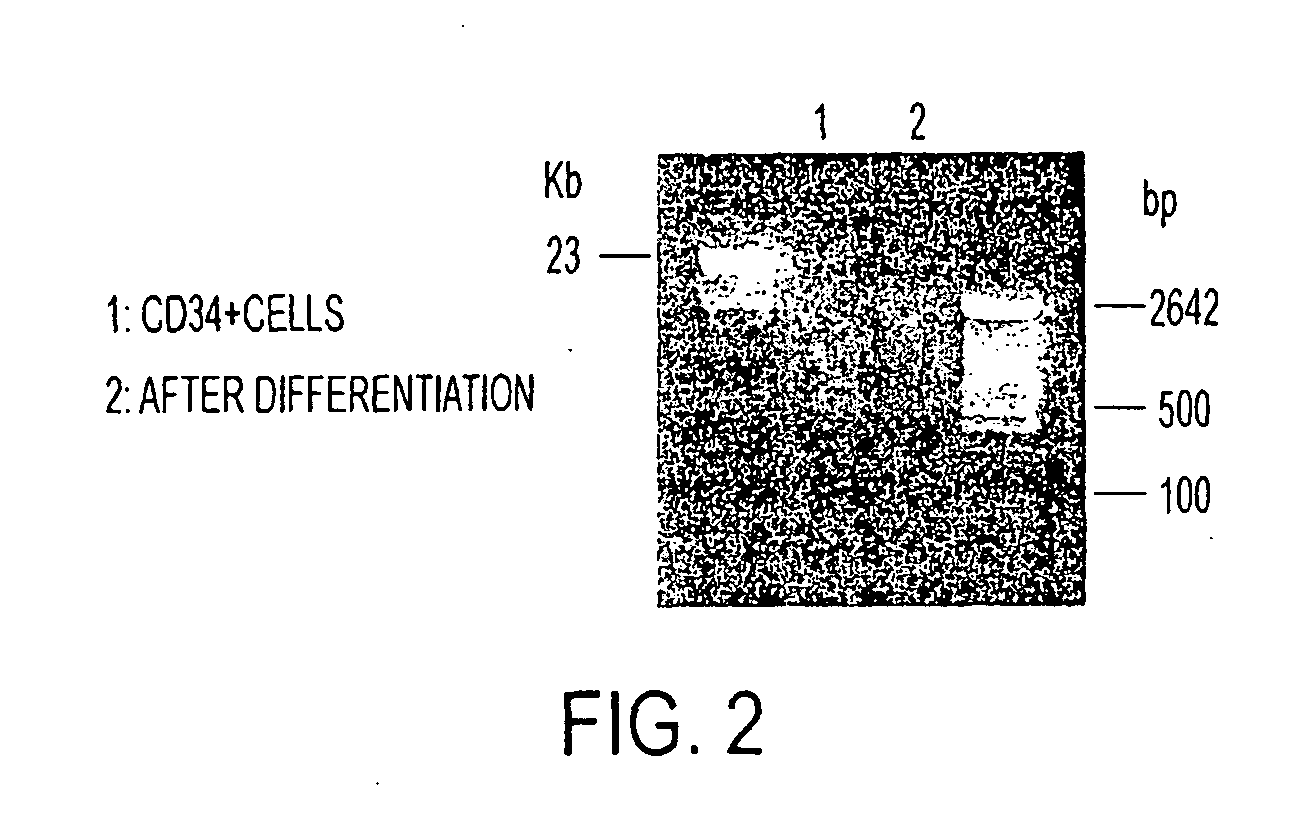Sequencing method
a sequencing method and sequence technology, applied in the field of sequencing methods, can solve the problems of tedious assays for gene products, unconcrete definition of the length of sequences to be analyzed for regulatory content,
- Summary
- Abstract
- Description
- Claims
- Application Information
AI Technical Summary
Benefits of technology
Problems solved by technology
Method used
Image
Examples
example i
Introduction
[0193]We have developed a rapid tag based approach for identifying regulatory DNA elements in human cells genome-wide using restriction enzymes. This methodology necessitates a large number of sequence reads for an accurate quantitative measure of functional sequence. High throughput sequence technology, such as the 454 sequencing technology, affords a large number of sequence reads which enable the rapid and comprehensive determination of the regulatory DNA in any particular cell type.
[0194]In these Examples, we show the preparation of functional DNA from CD34 and differentiated cells using restriction digests with NlaIII in chromatin preparations followed by Sau3A digests and size fractionation to identify fragments between 100-400 bp for sequencing. These DNA fragments are then ligated to modified (biotin) DNA adaptors and purified on streptavidin coated beads for subsequent processing through the standard 454 sequencing methodology. We localized greater than 60% of t...
example ii
Materials and Methods
[0197]A. Sample preparation
[0198]Chromatin preparation of CD34+ and myeloid cells
[0199]Cut Accessible DNA (1st restriction enzyme action)
[0200]Prevent Degradation (agarose plug)
[0201]Controlled Shearing (2nd restriction enzyme action).
B. Purification and Sequencing
[0202]The sample was subjected to agarose gel purification to generate fragments in the size range 100-400 bp, as shown in FIG. 2.
[0203]Double restricted fragments were purified (isolated) using modified 454 PCR+sequencing adaptors with biotin tag (as described herein) on streptavidin coated magnetic beads, as illustrated in FIG. 1.
C. Blast Mapping of Sequence Fragments
[0204]Fragments containing repeat sequence identified by RepeatMasker for more than 50% of their length were removed and the remaining fragments were aligned by BLAST to the human genome (NCB1 35). All unique or best hits alignments were identified and overlapping regions were collapsed to identify non redundant genomic spans. The 5′ mos...
PUM
| Property | Measurement | Unit |
|---|---|---|
| Volume | aaaaa | aaaaa |
| Volume | aaaaa | aaaaa |
| Volume | aaaaa | aaaaa |
Abstract
Description
Claims
Application Information
 Login to View More
Login to View More - R&D
- Intellectual Property
- Life Sciences
- Materials
- Tech Scout
- Unparalleled Data Quality
- Higher Quality Content
- 60% Fewer Hallucinations
Browse by: Latest US Patents, China's latest patents, Technical Efficacy Thesaurus, Application Domain, Technology Topic, Popular Technical Reports.
© 2025 PatSnap. All rights reserved.Legal|Privacy policy|Modern Slavery Act Transparency Statement|Sitemap|About US| Contact US: help@patsnap.com



